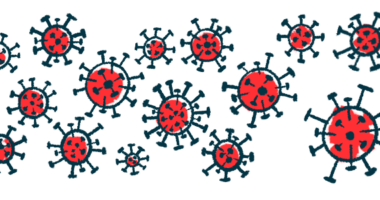Anemia is common in systemic sclerosis, tied to severity: Study
Almost 20% of people in study have low red blood cells or low hemoglobin

Anemia is found in almost 20% of people with systemic sclerosis (SSc) and is associated with an almost two times higher risk of death, a French study reports.
Iron deficiency was the most common reason for anemia in SSc, with older patients and those with diffuse cutaneous SSc (dcSSc) more likely to have anemia, which is a low number of red blood cells or low levels of hemoglobin.
The study, “Prevalence, causes, and clinical associations of anemia in patients with systemic sclerosis: A cohort study,” was published in the Journal of Scleroderma and Related Disorders.
Also called scleroderma, SSc typically leads to scarring in the skin due to the excessive production of collagen, the main protein component of scar tissue. Scarring can also affect internal organs, including the lungs, heart, kidney, and digestive tract.
Anemia is considered a risk factor for more severe outcomes in SSc. Here, a team led by researchers in France analyzed data from 502 SSc patients (mean age, 58; 85.7% women), diagnosed at the Lille University Hospital to learn more about how frequently anemia occurs and the underlying causes of it in SSc. Most of the patients (77.5%) had limited SSc and 21.6% had dcSSc.
SSc severity with anemia
One hundred patients (19.9%) had anemia at their first clinical visit. Anemia was defined as levels of hemoglobin lower than 12 grams per deciliter (g/dl) in women and 13 g/dl in men.
Iron deficiency was the most common cause of anemia (40%), followed by mixed anemia (24%), which was defined by two or more conditions that lead to anemia being present. Deficiency in vitamin B12 was the cause in 7% of cases and anemia of chronic disease (ACD) in 6%. ACD is a type of anemia caused by certain long-term, or chronic, conditions that involve inflammation.
In 20 patients, the cause of anemia was unknown. Those with closer to normal hemoglobin levels were part of this group, along with elderly patients who were suspected of having myelodysplastic syndrome, an umbrella term for a group of rare blood cancers.
Thirty-two patients with iron deficiency-associated anemia had a gastrointestinal examination of blood loss. Most (56%) had digestive bleeding, which involved the upper gastrointestinal tract in 90% of cases.
Compared with SSc patients without anemia, those with it were older (mean age, 61 vs. 57.4) and more likely to have dcSSc (33.7% vs. 18.3%). Symptoms of gastritis, or inflammation of the lining of the stomach, also were more common in those with anemia (29.9% vs. 17.9%).
These patients had impairments in their breathing and cardiovascular capacity, as shown by a higher proportion with a forced vital capacity (FVC) lower than 70% (15% vs. 6%) and a higher pulmonary artery systolic pressure (PASP). FVC is a measure of lung function that indicates how much air a person can forcibly exhale after a deep breath. PASP is the blood pressure in the pulmonary artery during a heartbeat.
They also had a lower diffusing capacity for carbon monoxide after correcting for the anemia, which assesses the lungs’ ability to transfer oxygen from the air to the blood. Their exercise capacity also was reduced, as assessed by the six-minute walk test.
During a median follow-up of 5.2 years, 65 patients (14.8%) died. Anemia was associated with a 1.94 higher risk of death, after adjusting for age, SSc subtypes, FVC, and pulmonary arterial hypertension, a statistical analysis showed.
The researchers said their study shows “a high frequency of anemia among patients with systemic sclerosis,” and these patients “have a more severe disease and a higher mortality rate.”







